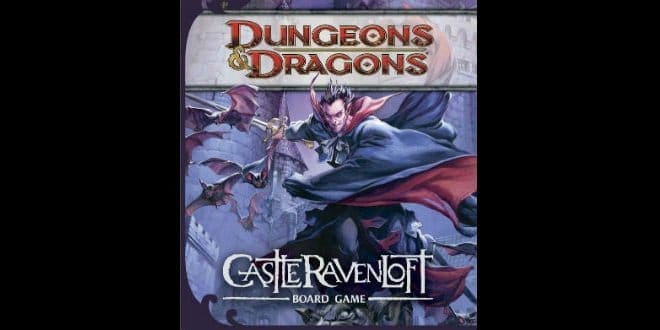Castle Ravenloft, the first game that was released in the D&D cooperative adventure board game line, is a great place to start for people who are interested in board gaming but don't know where to begin. Castle Ravenloft is also a good fit for gamers who want to have a light/mid-weight game that can scratch a dungeon crawl itch without requiring players to commit to a lengthy campaign or get too involved in a heavy rule-set. Players seeking a story rich pen and paper style D&D game or a campaign game with persistent characters are probably better off looking elsewhere though.
At first blush, Castle Ravenloft looks to be D&D in a box. The box cover art shows the menacing vampire Count Strahd striking a fearsome pose in front of a castle that must surely be filled with all sorts of Gothic horrors, and the box is chock full of plastic miniatures that represent the game's heroes and the various monsters that those heroes will be questing to defeat. Take a peek at the rules though and the true nature of the game starts to come in to focus. Castle Ravenloft eschews deep story telling and complex mechanics and instead ends up being more of a cooperative puzzle game where smart play and resource management become the players' focus.
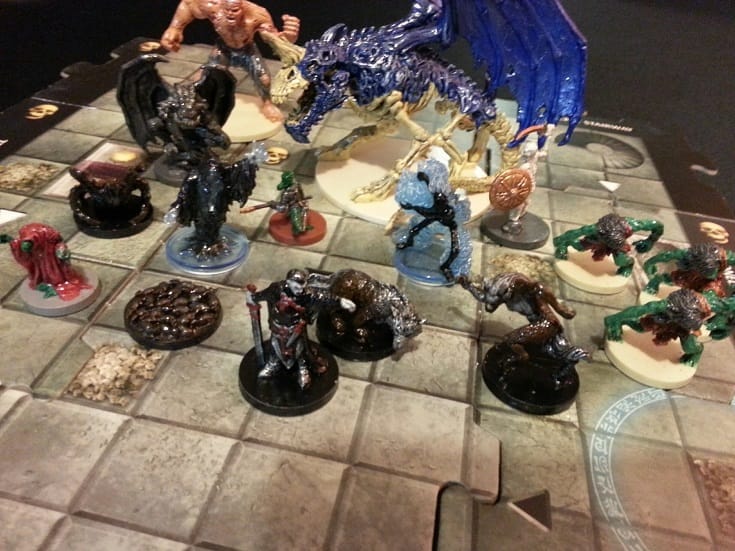
Each of Castle Ravenloft's missions only have a short blurb of story to accompany it and, even though missions are set up in a way that hints at the possibility of a linear campaign, there is no in-built campaign system in the rules. This isn't an inherently bad thing though. Players who don't want to commit to a campaign can still play each mission in order which, while light on story, does give a sense of overall progression throughout the game. For players who have no interest whatsoever in a campaign, the balance of the game allows them to open the box and play any mission of their choosing without needing to worry about feeling underpowered.
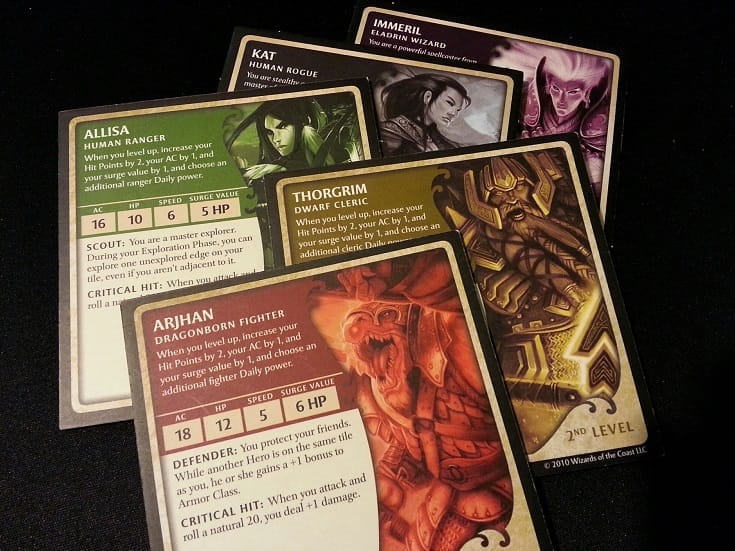
The game-play itself is straightforward and easy to understand which is great for newer players. Unfortunately, due to the simplicity of the rules, there aren't really a whole lot of thematically interesting choices or astounding displays of skill to be made. Players each control one of the game's heroes and will be moving around and exploring a map made up of randomly drawn tiles while fighting monsters and picking up treasure cards. Each mission has a number of tiles that must be explored before the tile containing that mission's goal can be found.
The exploration, or lack thereof, is really what makes this game more of a puzzle and resource management game as opposed to a dungeon crawl. Each tile will have at least one monster on it and, while the tiles have different layouts and some different art, the main difference between the tiles is whether or not players will face an Encounter once the tile is placed. Thankfully there are a few missions that change up the formula and add variety so, even though the exploration is rather limited, the missions do feel distinct and different from one another.
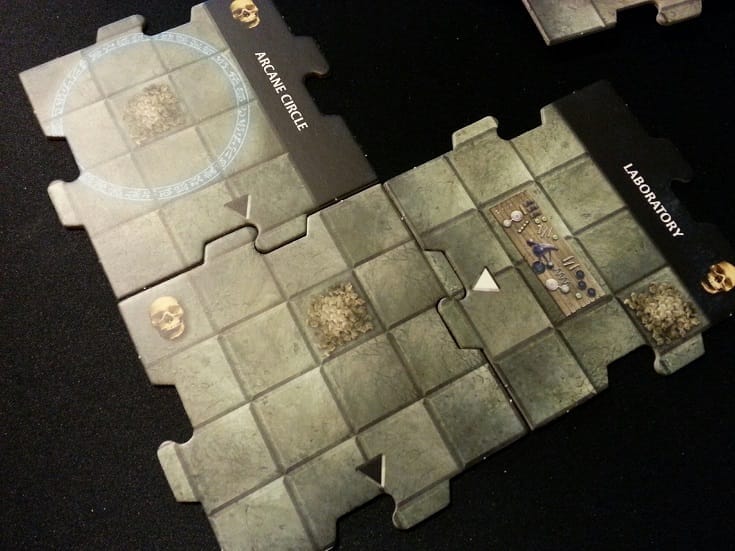
Exploring a tile is always the last thing that a hero can do on their turn and each monster revealed activates after the revealing player's turn has ended. This means that newly placed monsters always get a chance to act before the heroes can stop them. As such, it can feel like the game is constantly pounding on the players in an attempt to wear them down. In addition to constantly being ambushed by monsters, the Encounters that are triggered by new tiles, or by the failure of the heroes to explore, are nearly uniformly bad for the heroes. Through all of these nasty encounters and monster ambushes - players need to manage their health, the constant need to explore new tiles, and when to use their limited use hero powers to best effect.
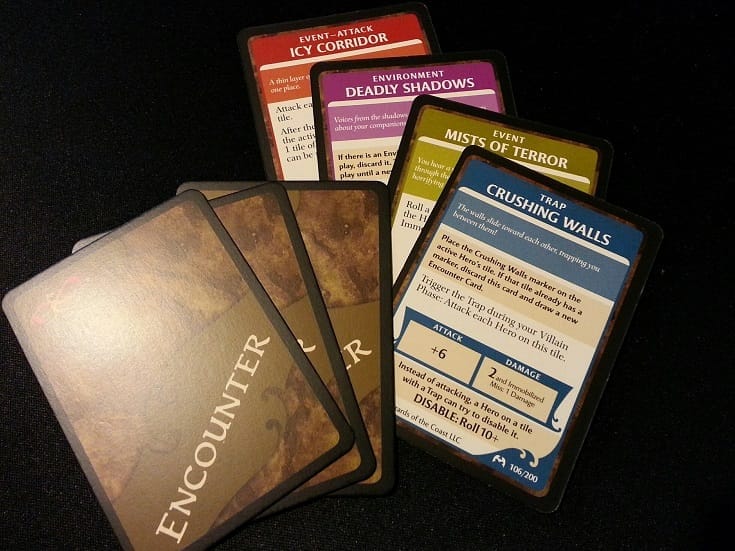
This all adds up to a game that can be very difficult. Thankfully there are some ways to mitigate the difficulty. Players have the option of adding more Healing Surges, which are effectively extra lives, to their party's supply and Encounters can be canceled if players collectively spend 5 experience points when the Encounter is drawn. Experience points, which are earned by defeating monsters, are yet another resource to manage as they are not only spent to cancel Encounters but can also be spent to level up a hero character.
The downside to the level-up system is that players can only spend 5 experience to level up when they roll a natural 20 on the game's die while attacking or attempting to disable a trap that has been placed by an Encounter card. This makes the decision to hold experience versus cancel a harmful Encounter a difficult one, although leveling up a hero can have a profound effect on the outcome of the mission. The decision to hold experience for potential level up vs spend it to cancel an encounter can be an agonizing one, especially since the players never know exactly what lies around the next corner.
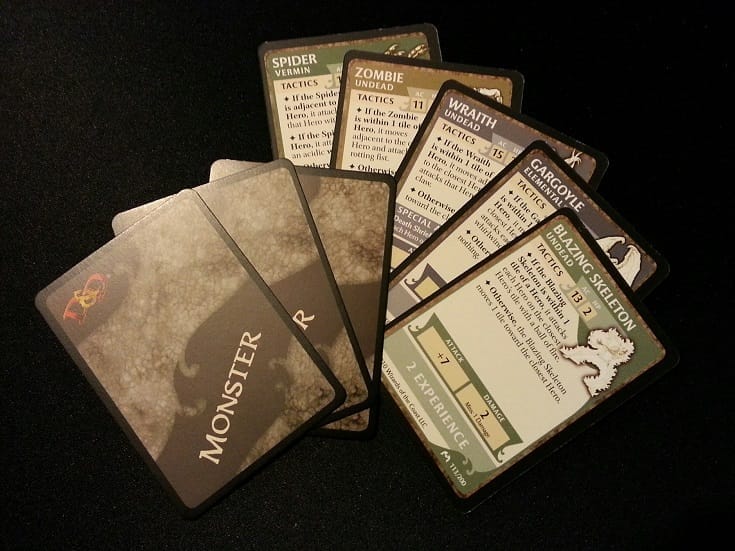
Many of these mechanics can seem clunky and restrictive when viewing the game as a pure dungeon crawl or D&D-lite but come more into focus when approached as a puzzle that the players must collectively solve. The mechanics show through during game-play and can feel gamey rather than intuitive; although, again, being able to see exactly how the gears of the game turn is a great way for players to get involved in the 'hows and whys' of board games before trying to tackle something more complex or esoteric.
A note on solo play: Castle Ravenloft accomodates 1 to 5 players out of the box. Solo play can be accomplished in a few different ways and can have varying levels of success based on the mission played. A solitary player can attempt missions using just a single hero, although many of the missions will prove to be extremely difficult for a single hero. Alternatively, a single player can control multiple heroes to even out the game balance. Controlling multiple heroes is actually less clunky than it may seem as the set turn order and monster activation rules change based on the number of heroes rather than player count.
A note on “chrome”: The cardboard tiles and miniatures in Castle Ravenloft are good quality, especially the giant Dracolich miniature, and the minis look great with a coat of paint. The game's cards, on the other hand, are on the flimsy side and the art throughout the game is, at best, serviceable and rather mediocre. Many of the cards simply contain text, the monster illustrations are monochrome, and the card backs are uninspired and boring. The one positive to the presentation is that it has, at least, remained consistent throughout the D&D series of board games and so nearly everything in the game is compatible with the other adventure board games as well as with products from Wizards of the Coasts' Dungeon Command line.
The bottom line:
Castle Ravenloft is a fun and challenging cooperative game. While it doesn't provide much of a story and the mechanics are fairly simple, it fills a great role in a gaming collection. Castle Ravenloft is a great game for players who are new to board gaming or players who like the theme of Dungeons and Dragons yet don't have interest in running a pen and paper campaign. Castle Ravenloft is also a good choice for players who want to get a dungeon crawl-esque feel from a board game without having to devote a huge amount of time to rules and strategy. For players that are in to more complex games Castle Ravenloft can still be a fun game to play for a more 'beer and pretzels' style experience.
Get this game if:
You enjoy cooperative games.
You like the D&D theme.
You want to get in to board gaming but have been unsure about where to start.
Avoid this game if:
You want a rich pen and paper style D&D experience.
You prefer complex, mechanically dense dungeon crawl games.
You prefer games that support campaign play over one-shot scenarios.
Rules for Castle Ravenloft can be found here.
Castle Ravenloft can be purchased via Amazon here.
The copy of Castle Ravenloft used for this reveiw was purchased by the author.
Review Summary
Castle Ravenloft is a fun and challenging cooperative game. It is a great place to start for players new to board games. It can also be fun for experienced players looking for a mid-weight game that combines puzzle and resource management with a D&D theme.
(Review Policy)Have a tip, or want to point out something we missed? Leave a Comment or e-mail us at tips@techraptor.net
